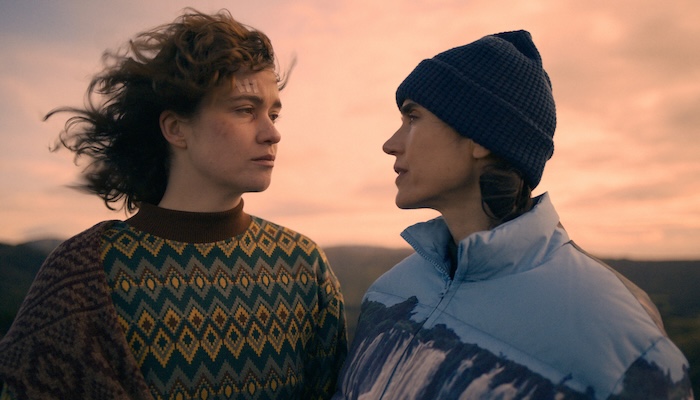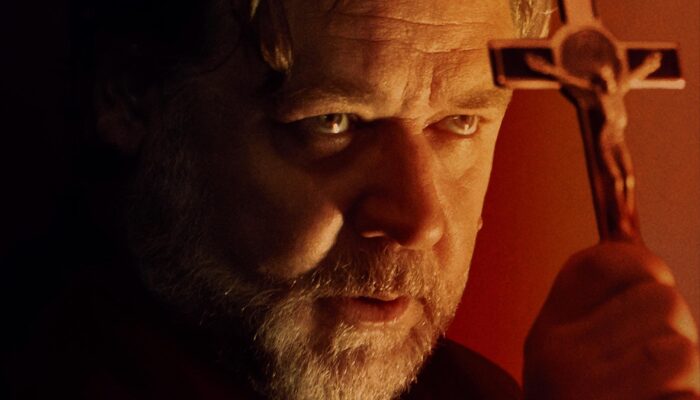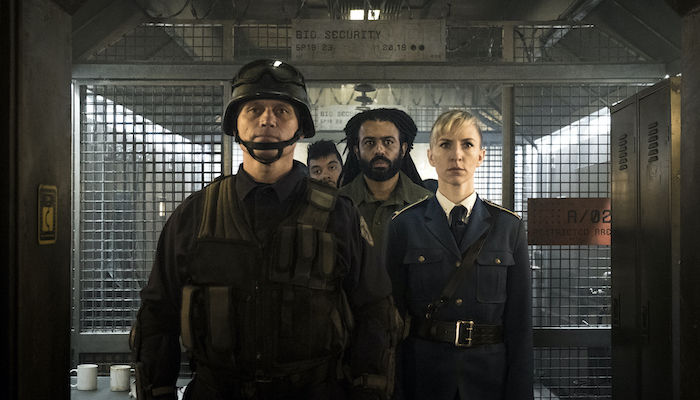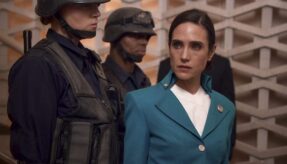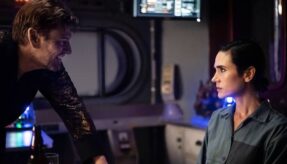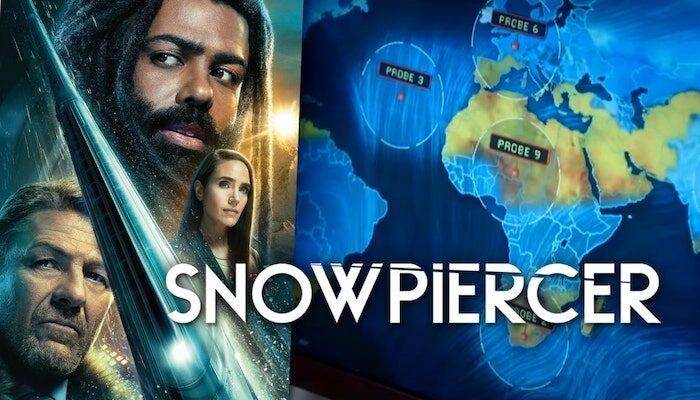TV Review: SNOWPIERCER: Season 1, Episode 1: First, the Weather Changed [TNT]
Table of Contents
Snowpiercer First the Weather Changed Review
TNT‘s Snowpiercer: Season 1, Episode 1: First, the Weather Changed is far better than the viewer is expecting. Snowpiercer has a lot to live up with regard to director Bong Joon Ho‘s seminal film based on French graphic novel Le Transperceneige by Jacques Lob, Benjamin Legrand, and Jean-Marc Rochette. Snowpiercer smartly keeps the tone of the film, more or less, along with certain beats but goes in a completely new, rewarding, and surprising direction.
First, the Weather Changed is rare – it gets better as the episode goes on. The episode’s strength is the background and characterization that First, the Weather Changed gives some of its main and secondary characters.
The Police Detective Addition
The best and most furtive new plot element added to this adaptation of Le Transperceneige is that Andre Layton (Daveed Diggs) is, or bearing the current circumstances in mind, had been, a police detective (I have not read the graphic novel). When this is revealed in the first twenty minutes of First, the Weather Changed, the viewer’s perception of Layton automatically changes but that is nothing compared to the change in the train employees.
He is no longer seen as human refuse as the other tail-enders are seen, he has value, something to offer the train now, and possibly on an on-going basis.
Transition from the Tail Car to the Third Class Mess Hall
The most intriguing sequences during First, the Weather Changed are when Layton is taken from the back of the train to some of its forward sections. The cleansing sequence, the clothing, the different parts of the train, the underground transport area, seeing sunlight after seven years of tail-section captivity, they were singular, striking moments in the episode, topped off by the most common yet happiest area (for Layton anyway) of the train – the third-class mess hall. Any large-volume mess hall is generally the same anywhere a person goes but it is who eventually sits at the table with Layton and what is placed in front of Layton that cap off these train-travel moments to a fine point.
There is an old adage – “food is the way to a man’s heart.” After suffering and deprivation, food, good food, can become something else entirely. Food, in that instance, becomes a conduit back to better times, happier times, as you relive them through your tastes buds, how things used to be, how good life could be. That is what brings tears to Layton’s eyes as he devours the tomato soup and grilled cheese sandwich, scrumptious symbols of a life and world that have been ripped from his grasp, never to be held onto firmly again.
For a brief instant, Layton becomes his old self (one imagines), cocky and self-assured as he asks for more soup in a conversational tone, sensing that something is afoot and that he can ask for more (and that he might actually get it). It’s an interesting transition from sadness, to bewilderment, to joy, to momentary revitalization.
Secondary Characters
Some of the secondary character in First, the Weather Changed are diversified and given depth by their words, others by their actions or how other people refer or defer to them. One such character is former Detroit Police Officer Bess Till (Mickey Sumner). Two others are Strong Boy (Kurt Ostlund) and Winnie (Emma Oliver).
Strong Boy has a few good, non-verbal character-build sequences (no pun intended. When you see the episode, you’ll know what I mean) where less is more. Winnie’s moment of gory purpose is unexpected during daunting circumstances yet she holds fast to her singular duty (a good innovation on a similar battle in the original film adaptation). The expression on her face as she holds “the door key” is hilarious and fitting. It is the very expression one would expect in such a gruesome moment in history.
When Strong Boy is utilized in the eventual melee battle, the viewer sees why he is given extra food, a sacrifice that everyone in the rear compartment makes for this one person, for a specific moment, and a specific mission – liberation.
The Violent Revolt
The bloody battle that erupts in First, the Weather Changed is very reminiscent of the one that transpired in Bong-hoo’s film and is far more violent. There is a particular character that plays a pivotal role and does things, because of their physical prowess, that others can not. You probably know whom I am referring to. If you don’t, so much the better. It’s a good, visceral scene, showing the viewer that its producers and TNT plan to pull no punches when it comes to on-screen violence. Snowpiercer can thank The Walking Dead for successfully lowering the bar on what can and can’t be shown on television when it comes to bloodshed. The battle scene in First, the Weather Changed would not be possible in its current incarnation if ten seasons of zombie machete hacking had never taken place.
Like some of the seminal arena fight scenes in Gladiator, the viewer is entertained by what they see when battle is joined in First, the Weather Changed. It is brutal. This type of revolt, this type of rage, is what is born of degradation and oppression. I am surprised the well-educated in the front of the train have not learned this historic lesson. Not even electronic security doors can stop ingenuity when said ingenuity is constantly feed with despair and the longing for a better life. Ask the refugees that flee thousands of miles on foot from a third world country to another country seen as the pinnacle of the modern world. That is the level of desperation that feeds the revolt in First, the Weather Changed. When one considers that and the plight of the tail section inhabitants, this famous quote comes to mind:
“Tyranny, like hell, is not easily conquered; yet we have this consolation with us that the harder the conflict, the more glorious the triumph”
—”The American Crisis,” December, 1776.
The Identity of the Conductor
I wasn’t expecting to see the conductor of the train in this episode of Snowpriecer but since this is the pilot episode and its producers made it to get the show picked up to series, they throw a gaggle of narrative bombshells at the viewer to entice future viewing (and the series pickup). This is one of them. The identity of the conductor is a secret that should have been kept until the Season One finale in my opinion. There is no need for it in First, the Weather Changed. There is enough good meat on the bone without this thrown in. It’s a decent twist at max and nothing beyond that because the viewer doesn’t get to know the character before the reveal. That is why the reveal would have benefitted from being shifted to the season finale. By that point, the viewer would have gotten thorough understanding of the character and their motivations before being hit with this grand revelation.
The Farm and Train Balance
Like the resource balance spoken of in the film version of Snowpriecer, dictated by mathematics and logic, Melanie Cavill (Jennifer Connelly) verbalizes that same tightrope when describing a strawberry to Layton and how much it is worth in relation to him or someone else from the tail section of the train.
Only someone of intelligence could memorize the random nutrition value of a strawberry, keep it in their head along with how beneficial a single strawberry is to a single human being. And only a cold-blooded, Paul Redecker-like pragmatist could rationalize that a piece of fruit is more important, in any way, than a human being.
First, the Weather Changed speaks of these aspects of Melanie Cavill’s character and personality without saying them.
There is a subtly in this aspect of episode’s script that screams finesse, where writers Josh Friedman and Graeme Manson were hearing in their ears as they wrote “Show, don’t tell.”
The Unity at the Back of the Train
First, the Weather Changed makes sure to show the unity in the rear of the train (“one-tail”) during quiet moments and the camaraderie amongst wealthy passengers in the middle and front of the train. It is the union in the rear train compartment, shown in one well-executed scene in which a character is given alone time, a rarity in such a confined space, where music is played, dancing occurs, and happiness seeps through the grim and misery, that shows how the nightmarish circumstance has unified divergent personalities, nationalities, and social classes. These people might not have ever known each other or socialized with each other in the world before but now, under the yoke of a single oppressor, locked and confined, they are brothers and sisters, comrades in a war for liberty.
This situation has unfortunate and unforeseen consequences for some of the more vulnerable inhabitants of the tail compartment. Example: When Andre Layton is taken from the rear car, Pike (Steven Ogg) lets Josie Wellstead (Katie McGuinness) know what the new situation is and what should eventually be coming his way now that her significant other and protection is gone from the tail. It’s subtle yet intimating, getting the point across with Josie’s eyes and face registering the new reality she is faced with without Layton.
The Doctor and The Drawers
Seen briefly in Bong Joon Ho’s film, the prison drawers are given room to breathe and depth in First, the Weather Changed. How people eat, drink, exert, and survive in a prison drawer is all “explained” in this episode. Much like the exoskeletons in Robert A. Heinlein‘s Starship Troopers, these prison drawers are intricately designed. Dr. Klimpt (Happy Anderson) could easily take advantage of the people in the drawers, but as he strokes the hair of one of them, the viewer sees that he cares for them (like Wally in Minority Report) and is a good caretaker.
Closing Thoughts
Snowpiercer may do for TNT what the Battlestar Galactica remake did for the SyFy Channel. Remember when everyone was watching SyFy each week to catch the latest episode of BSG from 2004-2009? Snowpiercer may be that show. Snowpiercer is the sci-fi TV show that start-up streaming services wish they had at the premiere of their services.
Leave your thoughts on this Snowpiercer First the Weather Changed Review and this season of Snowpiercer below in the comments section. Readers seeking to support this type of content can visit our Patreon Page and become one of FilmBook’s patrons. Readers seeking more Snowpiercer can visit our Snowpiercer Page, our Snowpiercer Twitter Page, and our TNT Page. Want up-to-the-minute notifications? FilmBook staff members publish articles by Email, Twitter, Instagram, Tumblr, Pinterest, and Flipboard.
Related Articles
FilmBook's Newsletter
Subscribe to FilmBook’s Daily Newsletter for the latest news!

